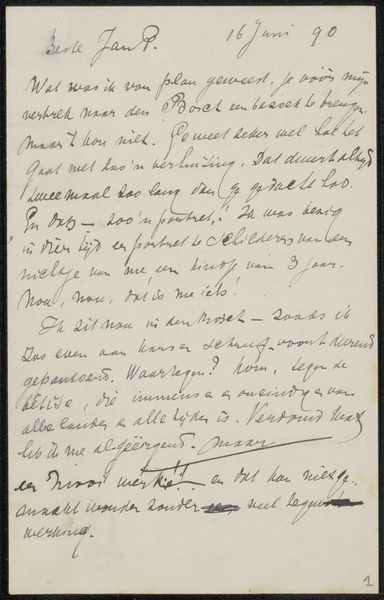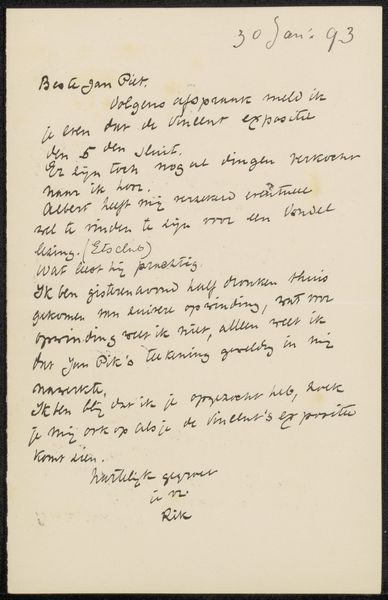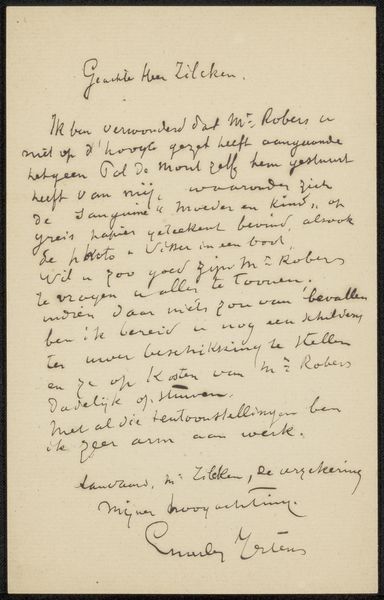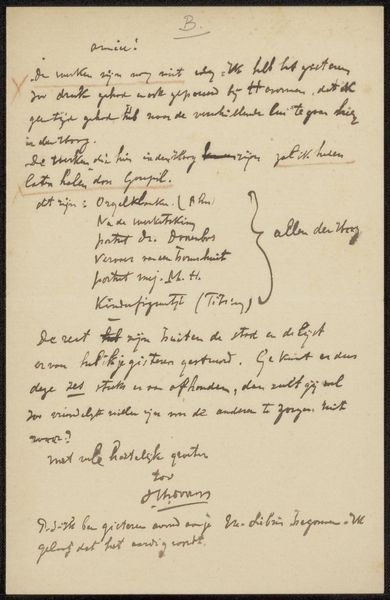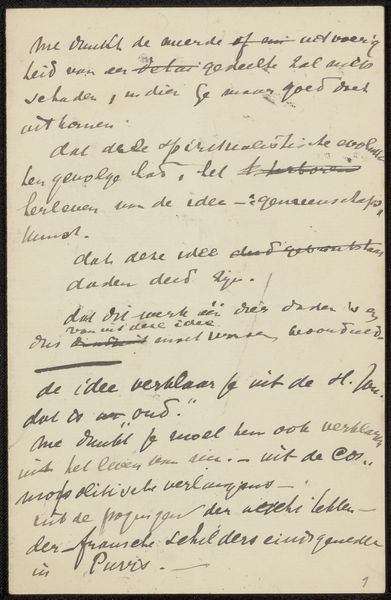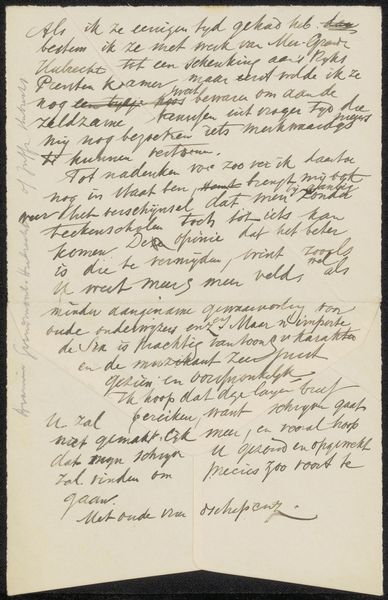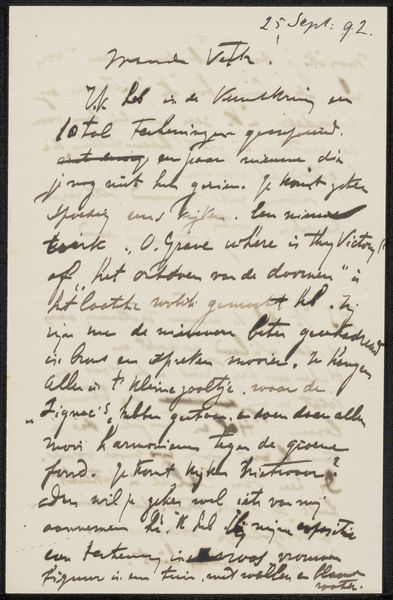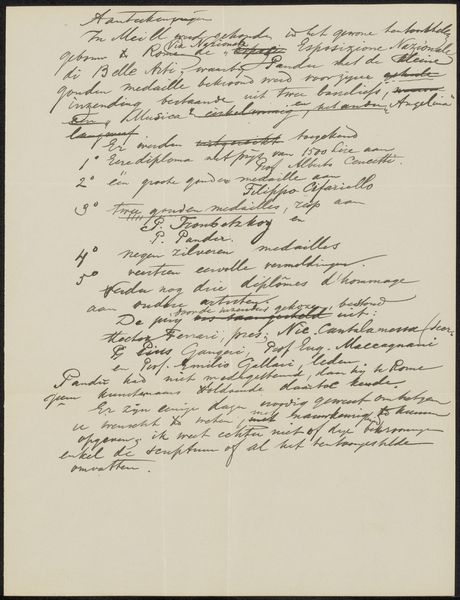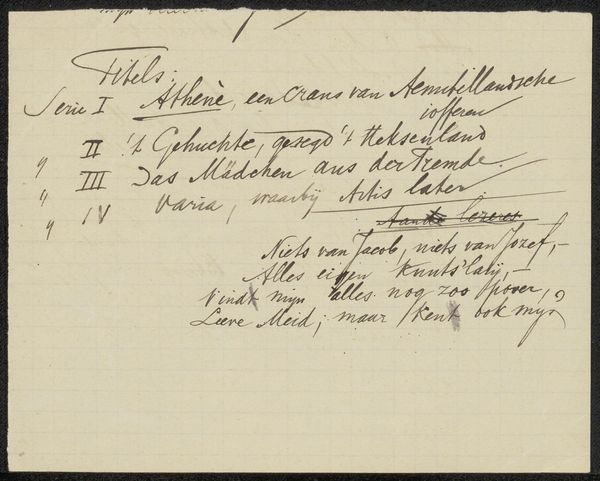
drawing, paper, ink
#
drawing
#
paper
#
ink
#
intimism
#
symbolism
#
calligraphy
Copyright: Rijks Museum: Open Domain
Curator: The Rijksmuseum holds this intimate drawing by August Allebé, titled "Gedicht uit collectie August Allebé," or "Poem from August Allebé’s Collection," created between 1900 and 1904. My first impression is a sense of restrained longing. Editor: It's intriguing how the visual components of the script take precedence over its lyrical content; it transcends mere handwriting. One immediately engages with the formal qualities inherent in Allebé’s Symbolist aesthetic, noting the sweeping calligraphic lines dancing across the squared paper. Curator: Absolutely. Consider that the support here, simple squared paper, brings an everyday materiality to what might otherwise be conceived as a precious artwork. This act democratizes the creative process, linking it more closely with daily labor and less with elevated artistic expression. The intimacy he invokes ties into the Symbolist interest in dreams. What does it suggest to you? Editor: Well, the contrasting weights and elegant curves achieve a remarkable spatial harmony despite the linguistic illegibility to the modern viewer. Note how his dynamic and somewhat haphazard scratching evokes a semiotic field that transcends conventional legibility and invites instead introspection regarding themes, like “Ideale sensitive.” Curator: Exactly! His manipulation of readily available materials — ink on commonplace paper — subverts conventional notions of artistic value, pointing to an intimate and personal symbolism, one focused less on finished product than process, highlighting the labor behind even poetic expression. And the French phrases used… what about those? Editor: Note the placement of the phrase “Avril 1900”, set neatly in the corner as almost a dedication that elevates it above raw emotional effusion through calculated form, suggesting a meticulously arranged composition. A world carefully assembled, not spilled onto paper. Curator: It really prompts reflection on the accessibility of art-making. By embracing such humble materials, Allebé challenges our expectations around who gets to create, and with what means, doesn’t it? Editor: I would argue Allebé transcends simple reproduction; his symbolic arrangements invite nuanced engagement by highlighting structure, composition, and their inherent symbolism through semiotic analysis and philosophy. Curator: Yes, that emphasis, in turn, enhances an understanding and the poem becomes about not what is says literally, but what it reveals through making. Thank you for expanding on this unique piece of craftsmanship, revealing new layers to Allebé’s approach to both art and production. Editor: A rewarding investigation to bring more insight into its form!
Comments
No comments
Be the first to comment and join the conversation on the ultimate creative platform.
